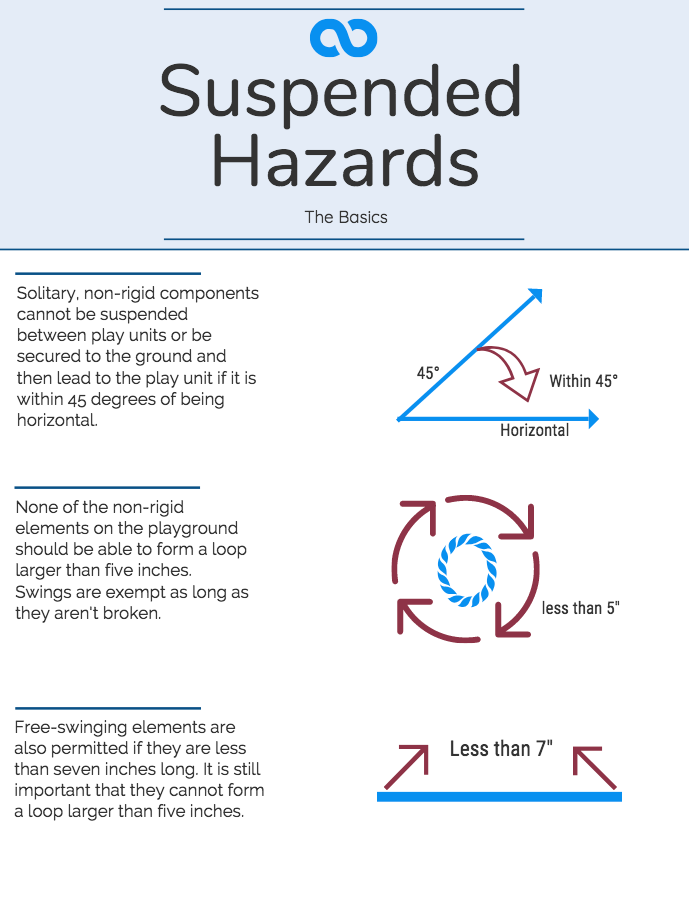Swings and nets are extremely popular with children and get a lot of use, but they come with particular hazards that need to be considered when maintaining and building any playground. Suspended hazards can pose the danger of strangulation or entanglement for children. There are several regulations that can be kept in mind to prevent injury from flexible components present.
Safety Regulations
Solitary, non-rigid components cannot be suspended between play units or be secured to the ground and then lead to the play unit if it is within 45 degrees of being horizontal. Any kind of rope or cable, including broken off swing chains can count as a suspended hazard. Suspended hazards are attached at one end and are longer than seven inches. None of the non-rigid elements on the playground should be able to form a loop larger than five inches so that it cannot get wrapped around a child’s neck.
Brightly colored components are much easier for children to see. It is therefore recommended that any non-rigid components on a playground be colored to prevent children from running into them and preventing injuries.
Exceptions
Chains and cables supporting swings are exempt from the rule unless the cable or chain becomes broken at any point. Cables can also break the 45-degree rule if they meet certain requirements. Components are exempt if they are at least an inch wide and are seven feet above a play area. Free-swinging elements are also permitted if they are less than seven inches long. It is still important that they cannot form a loop larger than five inches to keep the area as safe as possible from strangulation or entanglement dangers.

